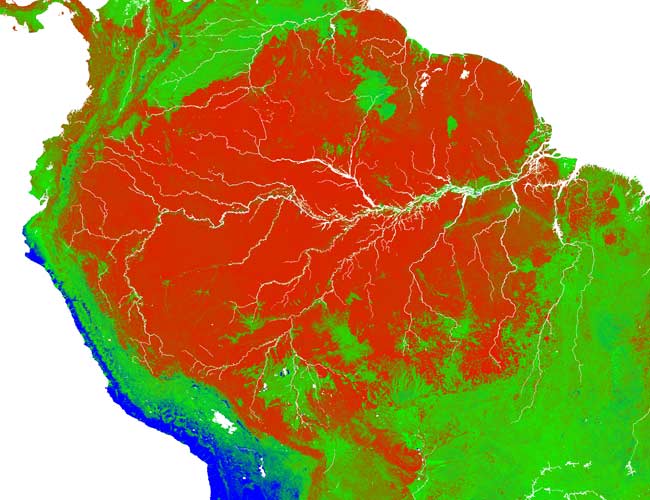Rainforest Life Faces Double Threat to Existence


It's a case of pick your poison for nearly half of all the plants and animals living in tropical forests. By the end of the century, either climate change, deforestation, or a combination may force them to adapt, move or die, a new study suggests.
Tropical forests hold more than half of all the plant and animal species on Earth. But by 2100, only 18 to 45 percent of the plants and animals in tropical forests may exist as they are today, according to the first study to look at how logging and climate change will impact the humid tropical forests worldwide.
Using the study as a guide, conservationists might be able to pinpoint where their efforts will be most effective.
"This is the first global compilation of projected ecosystem impacts for humid tropical forests affected by these combined forces," said ecologist Greg Asner of the Carnegie Institution for Science in Washington, D.C. "For those areas of the globe projected to suffer most from climate change, land managers could focus their efforts on reducing the pressure from deforestation, thereby helping species adjust to climate change, or enhancing their ability to move in time to keep pace with it. On the flip side, regions of the world where deforestation is projected to have fewer effects from climate change could be targeted for restoration."
The researchers analyzed satellite images of deforestation and logging maps, as well as 16 different global climate models, to see how different types of species could be geographically reshuffled by 2100.
Tropical forest areas highlighted in the study include:
- Central and South America: Climate change could alter about two-thirds of the rainforest's biodiversity — the variety and abundance of plants and animals in an ecosystem. Many climate models predict that droughts may become more frequent and severe here as greenhouse gases build up in the atmosphere. Combining that scenario with current patterns of land-use change, the Amazon Basin alone could see changes in biodiversity over 80 percent of the region.
- The Congo: Logging and climate change could harm between 35 percent and 74 percent of the forests in the region, and about 70 percent of Africa's tropical forest biodiversity continent-wide.
- Asia and the central and southern Pacific islands: Deforestation and logging — which has dropped by more than 22 percent in the last decade — puts between 60 percent and 77 percent of the area at risk of biodiversity losses.
"This study is the strongest evidence yet that the world's natural ecosystems will undergo profound changes — including severe alterations in their species composition — through the combined influence of climate change and land use," said ecologist Daniel Nepstad of the Woods Hole Research Center in Massachusetts who was not involved with the research. "Conservation of the world's biota, as we know it, will depend upon rapid, steep declines in greenhouse gas emissions."
Get the world’s most fascinating discoveries delivered straight to your inbox.
The study is detailed in the Aug. 5 edition of the journal Conservation Letters.
- In Images: Journey into the Tropical Andes
- 8 of the World's Most Endangered Places
- New Map Shows Which of World's Forests Stand Tallest
This article was provided by OurAmazingPlanet, a sister site to LiveScience.


